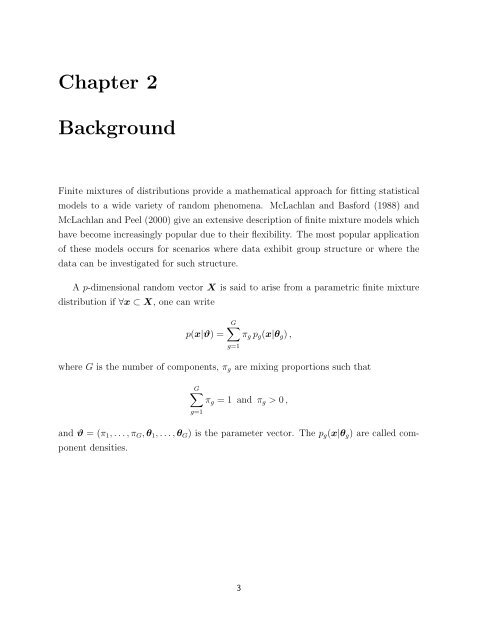Dimension Reduction for Model-based Clustering via Mixtures of ...
Dimension Reduction for Model-based Clustering via Mixtures of ...
Dimension Reduction for Model-based Clustering via Mixtures of ...
You also want an ePaper? Increase the reach of your titles
YUMPU automatically turns print PDFs into web optimized ePapers that Google loves.
Chapter 2BackgroundFinite mixtures <strong>of</strong> distributions provide a mathematical approach <strong>for</strong> fitting statisticalmodels to a wide variety <strong>of</strong> random phenomena. McLachlan and Bas<strong>for</strong>d (1988) andMcLachlan and Peel (2000) give an extensive description <strong>of</strong> finite mixture models whichhave become increasingly popular due to their flexibility. The most popular application<strong>of</strong> these models occurs <strong>for</strong> scenarios where data exhibit group structure or where thedata can be investigated <strong>for</strong> such structure.A p-dimensional random vector X is said to arise from a parametric finite mixturedistribution if ∀x ⊂ X, one can writep(x|ϑ) =G∑π g p g (x|θ g ) ,g=1where G is the number <strong>of</strong> components, π g are mixing proportions such thatG∑π g = 1 and π g > 0 ,g=1and ϑ = (π 1 , . . . , π G , θ 1 , . . . , θ G ) is the parameter vector. The p g (x|θ g ) are called componentdensities.3
















